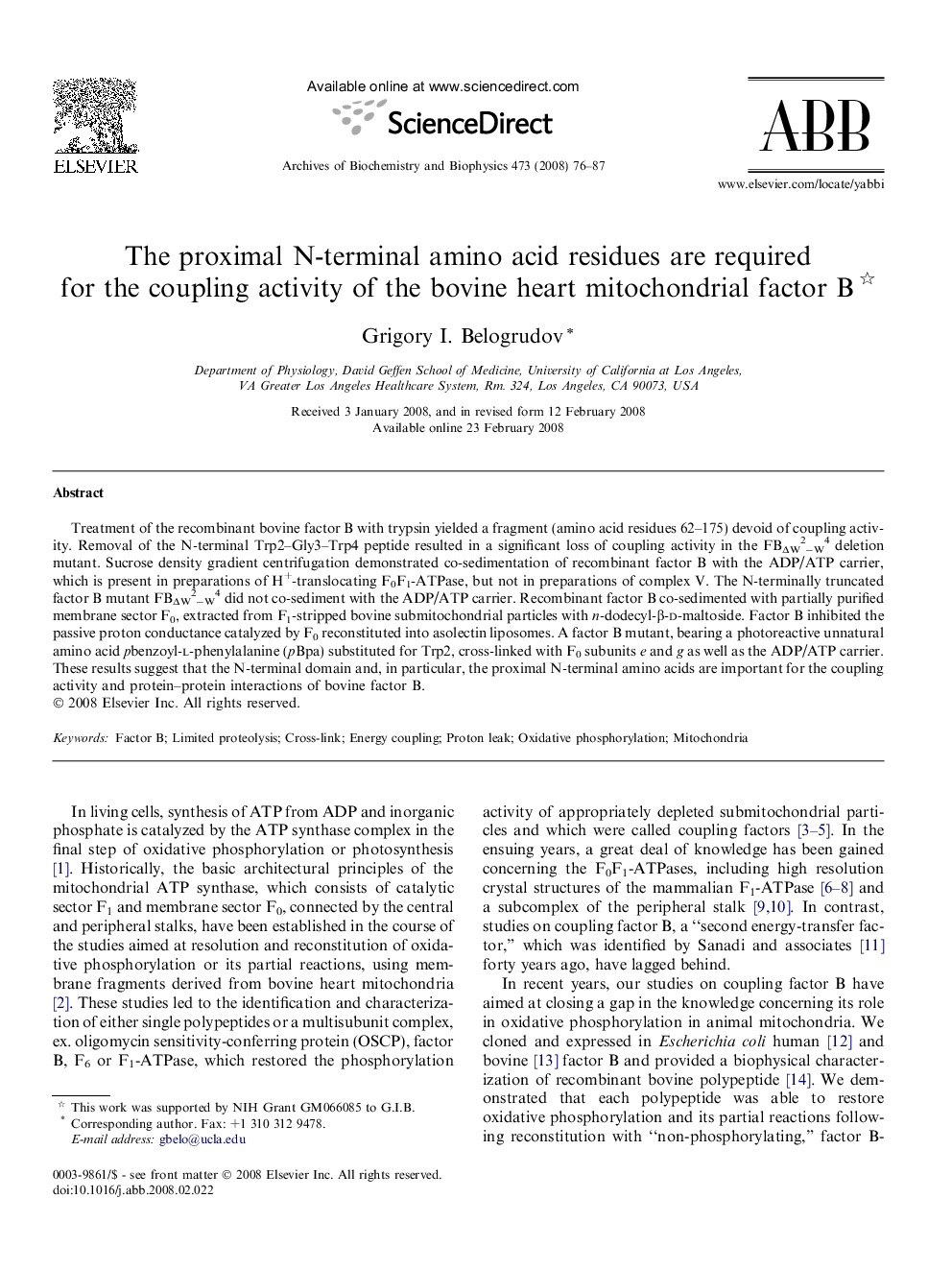| Article ID | Journal | Published Year | Pages | File Type |
|---|---|---|---|---|
| 1926692 | Archives of Biochemistry and Biophysics | 2008 | 12 Pages |
Treatment of the recombinant bovine factor B with trypsin yielded a fragment (amino acid residues 62–175) devoid of coupling activity. Removal of the N-terminal Trp2–Gly3–Trp4 peptide resulted in a significant loss of coupling activity in the FBΔW2−W4 deletion mutant. Sucrose density gradient centrifugation demonstrated co-sedimentation of recombinant factor B with the ADP/ATP carrier, which is present in preparations of H+-translocating F0F1-ATPase, but not in preparations of complex V. The N-terminally truncated factor B mutant FBΔW2−W4 did not co-sediment with the ADP/ATP carrier. Recombinant factor B co-sedimented with partially purified membrane sector F0, extracted from F1-stripped bovine submitochondrial particles with n-dodecyl-β-d-maltoside. Factor B inhibited the passive proton conductance catalyzed by F0 reconstituted into asolectin liposomes. A factor B mutant, bearing a photoreactive unnatural amino acid pbenzoyl-l-phenylalanine (pBpa) substituted for Trp2, cross-linked with F0 subunits e and g as well as the ADP/ATP carrier. These results suggest that the N-terminal domain and, in particular, the proximal N-terminal amino acids are important for the coupling activity and protein–protein interactions of bovine factor B.
